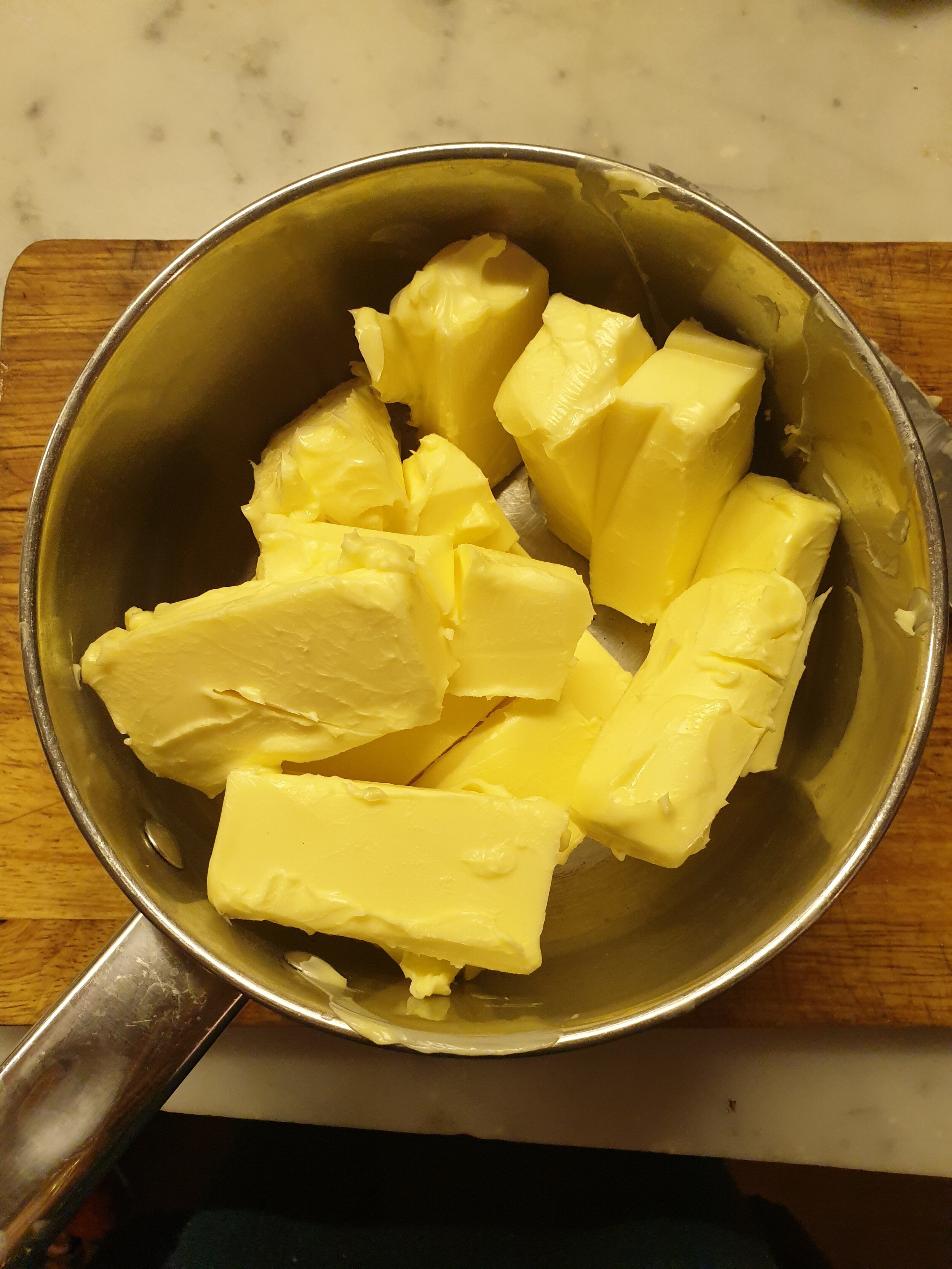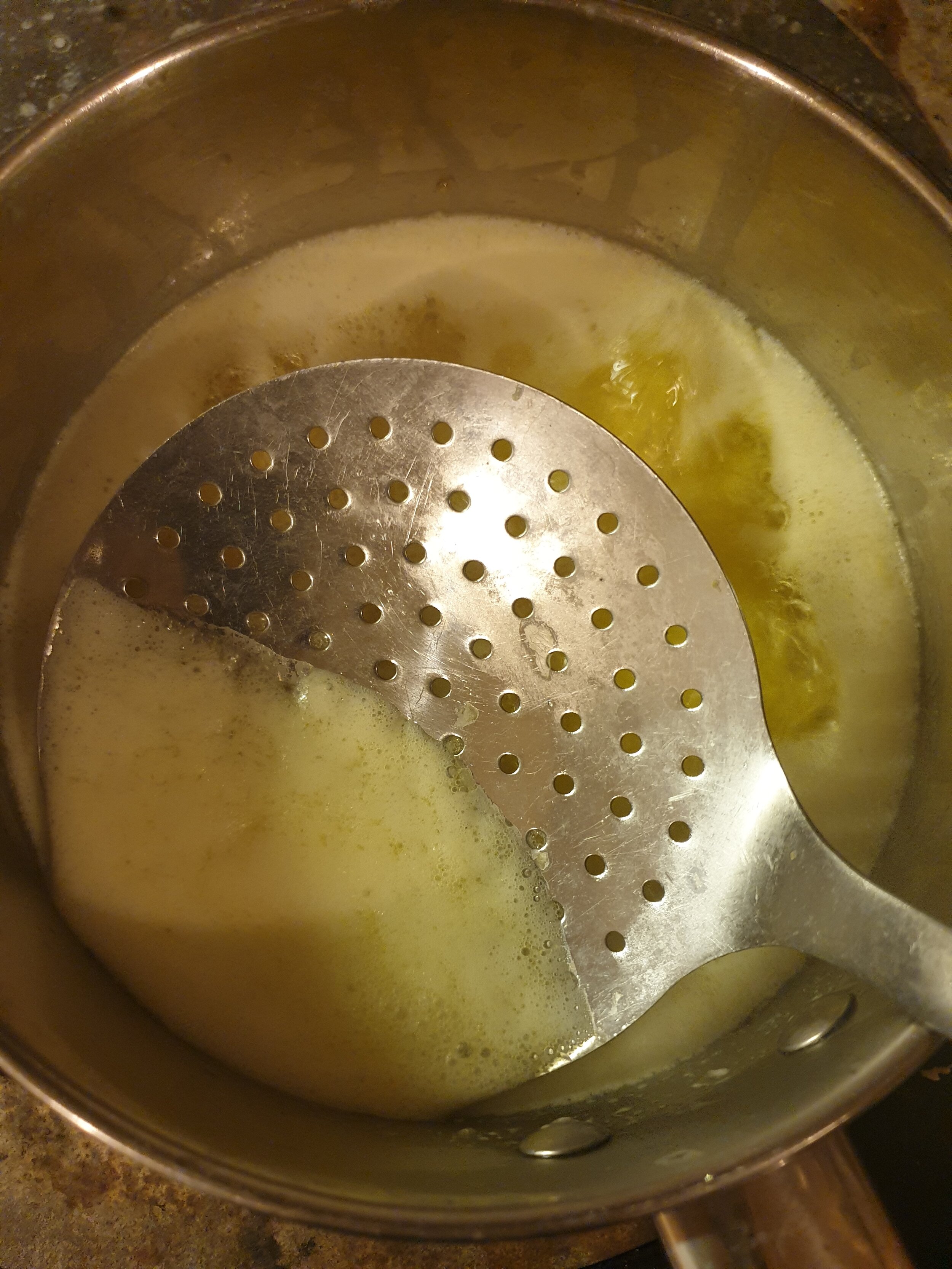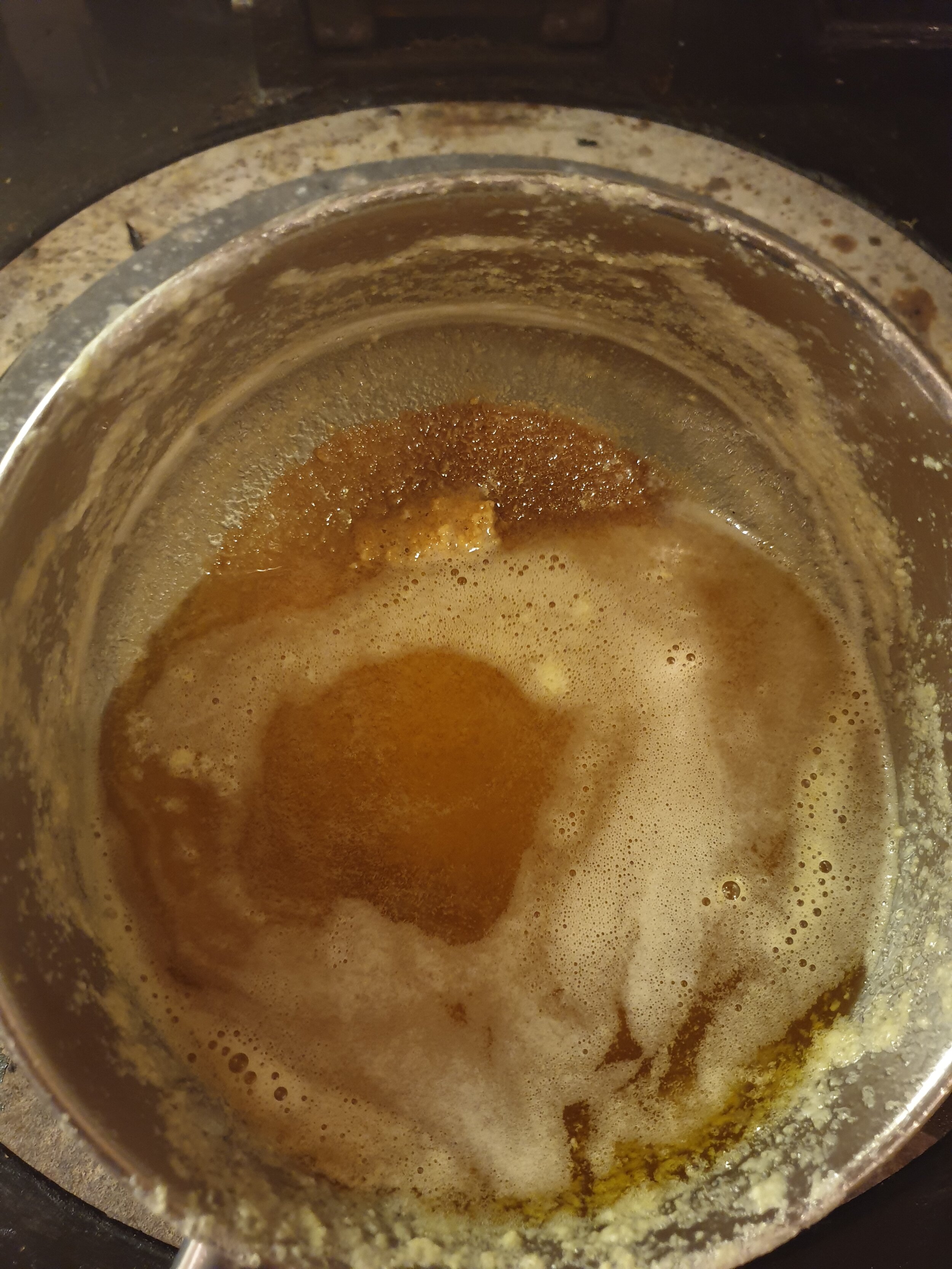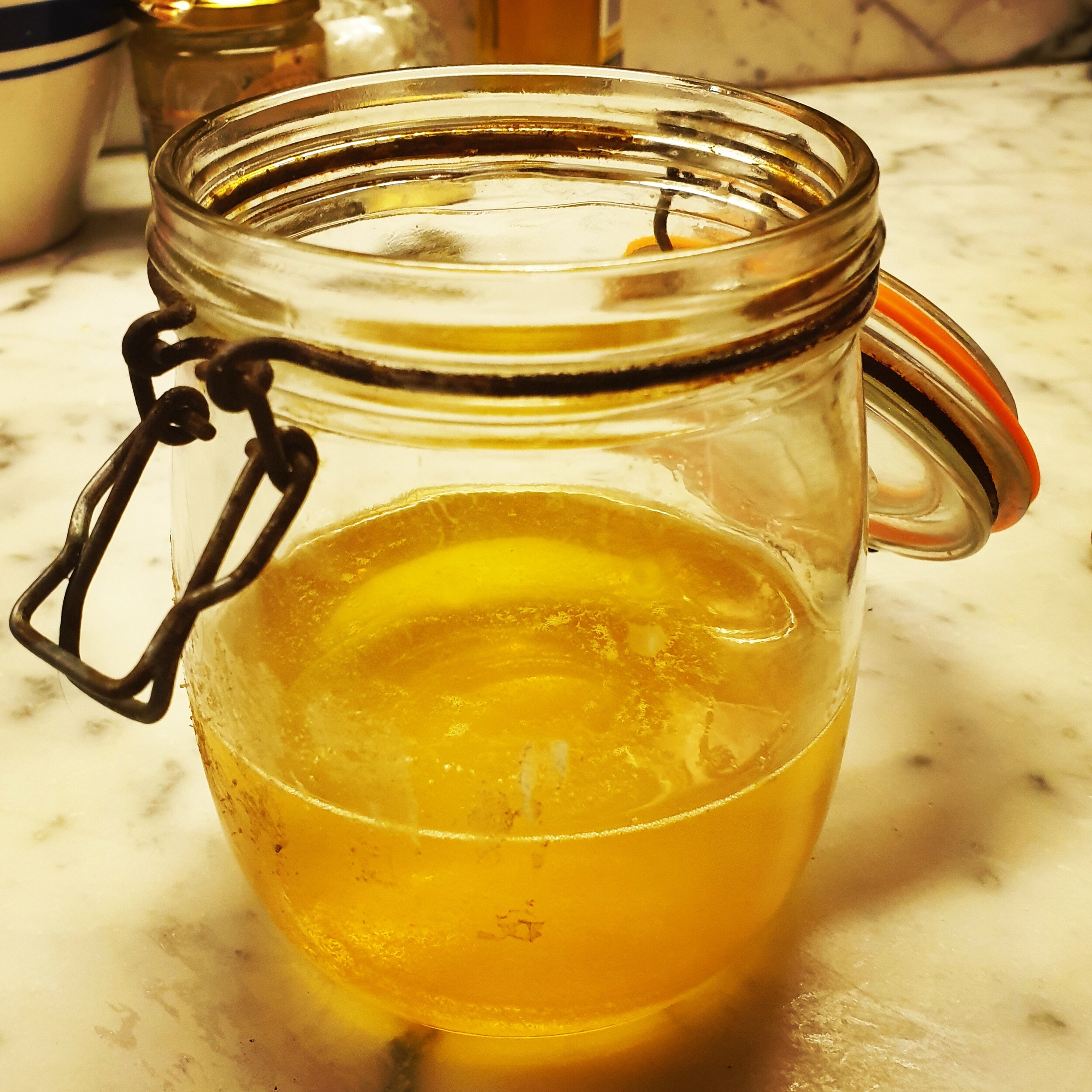Ghee the word is provocative, in Dublin slang it means something quite different to clarified butter, of which I won't go into here. Ghee is Hindi for fat, I call it liquid gold as it is as prized a possession for one's health as you can get.
So, isn't butter full of saturated fat? why yes it is, but recent studies are finding that saturated fat isn’t as bad as we all thought. Of course too much of a good thing is never going to be good, but if ghee is used in conjunction with lots of vegetables, whole grains ,lots of fibre, exercise and no processed food, you are on to a winner. Much like good old ordinary butter!.
As well as the wonderful vitamin benefits, one of the significant things about Ghee is the Butyrate content. Butyrate soothes the gut lining and helps to generate more good bacteria in the gut. There are many studies showing the positive outcomes for Crohn’s and other auto-immune patients with the use of Butyrate. Also studies have shown Crohn’s patients have been found to be in low in Butyrate.
When heated to high temperatures, a lot of seed or vegetable oils oils break down into unstable elements known as free radicals. Too many free radicals in the body damages cells and can contribute to the development of cancer. Ghee has a very high smoke point - 220/250 degrees before it becomes unstable and releases the free radicals which we do not want floating around. So it is considered a stable oil because of it’s versatility for cooking, frying, sauteing, melted on vegetables.
For those who have digestive issues with dairy, they can usually tolerate ghee as the milk proteins and sugars have been removed in the cooking process.
Ghee Health Benefits:
Butyrate content - these are Short Chain Fatty Acids that nourish the gut lining, if there are any complaints of digestive issues such as bloating, gas, constipation/diarrhea, headaches joint aches etc, using Ghee for the butyrate gut healing content alone is why I call it ‘Liquid Gold’.
Fat soluble vitamins, A,D,E,K - these need fats to get absorbed into the body.
Vitamin D -Bone Health
Vitamins A&D - Immune Health, Thyroid Health
Vitamin K - Blood Clotting factors
Vitamin E - Skin Health
Every few weeks when I'm in my local supermarket in Sligo, I think -'Ghee, yes I'm going to have a ghee making day’, so I get 2-3 big golden slabs of butter and they promptly get put away in the fridge and never turn into ghee...
But this week I did actually have a ghee making day, really pathetic considering it takes about 8-10 mins to do and there is no 'do' in it really..
So How to make Ghee:
If you can get organic unsalted grass fed butter great, if not Connacht Gold Butter(my local Sligo area butter), is pretty ok. I use salted because I can never find unsalted so I use less or no salt while cooking with it. I make it in one pack batches.
Cut up the pack of butter into smaller cubes to aid quicker cooking. Put into a small pan and bring to a heat just below boiling.
You will then see white foam on top of the now melted butter, turn down the heat and skim off the foam with a slotted spoon and discard, this is the milk protein, (whey), I then add a 1/tsp tumeric and twist of black pepper.
Keep simmering for another 10/15mins and you’ll notice the butter will foam again and is very golden in colour and if you gently tip the pan you will see there will be brown ‘crumbs’ on the bottom of the pan. The ghee is ready at this point.
Skim off any more white foam you see, as you are looking to get the pure fat and nothing else. Allow it to cool so you can then pour it into a clean clip top jar straining with 2 layers of muslin in a sieve to prevent any milk solids going into the jar.
This will keep for up to a year in the fridge but you’ll use it before then, it can be used in cooking or melted onto vegetables or spread on oatcakes, sourdough bread etc. I keep it on my counter top.
Here are some pics of what the process looks like, chopped up butter, skim off the froth, let it froth again and observe the brown crusty pan base, it’s done! let cool and strain through muslin or a fine sieve.





